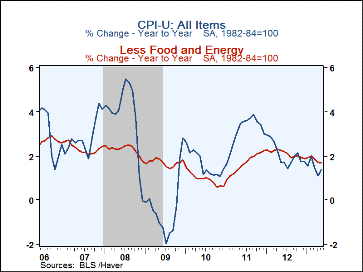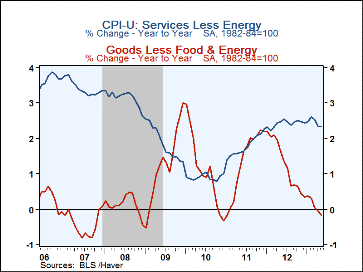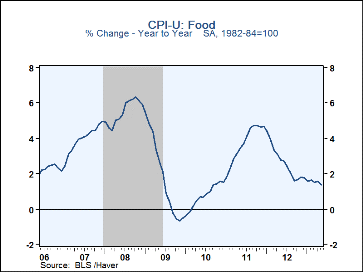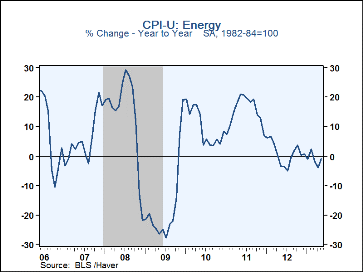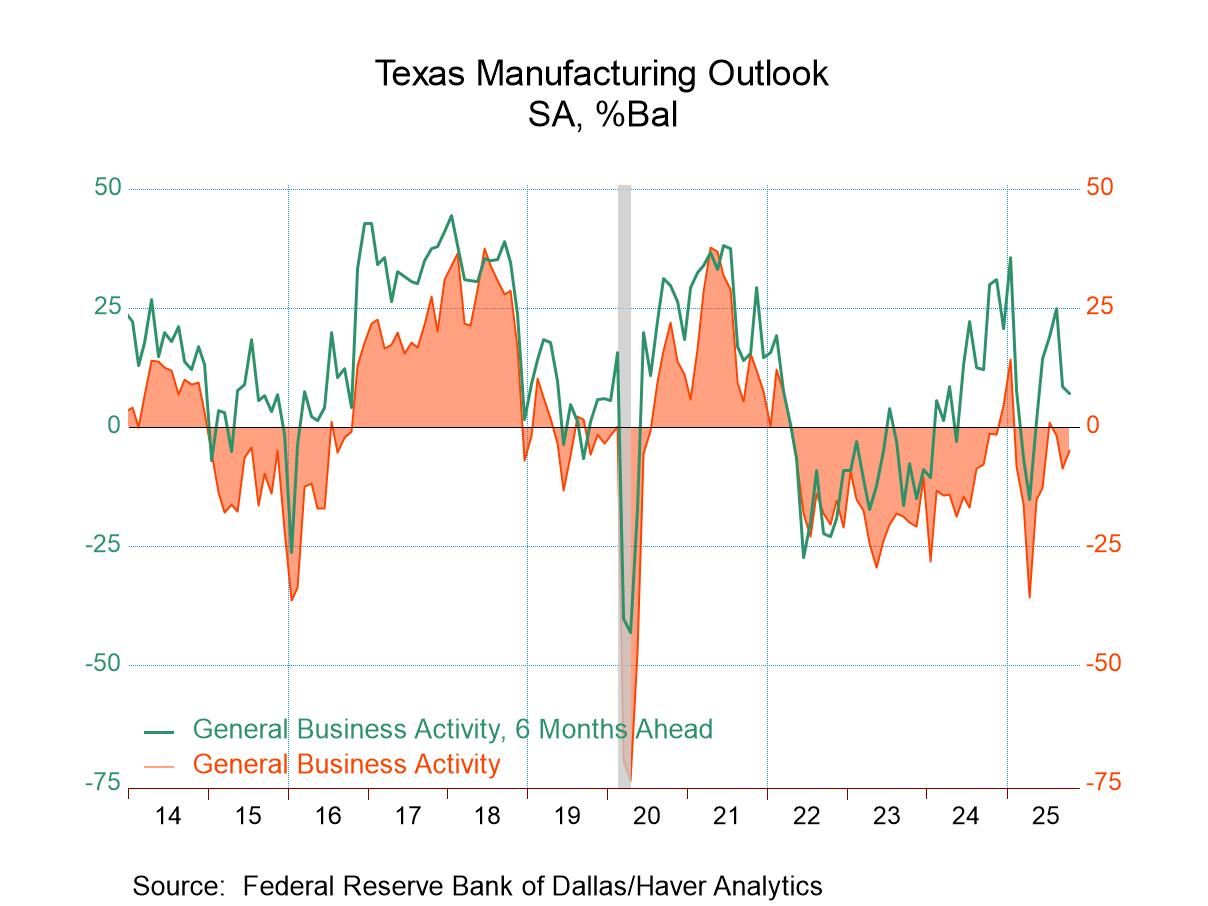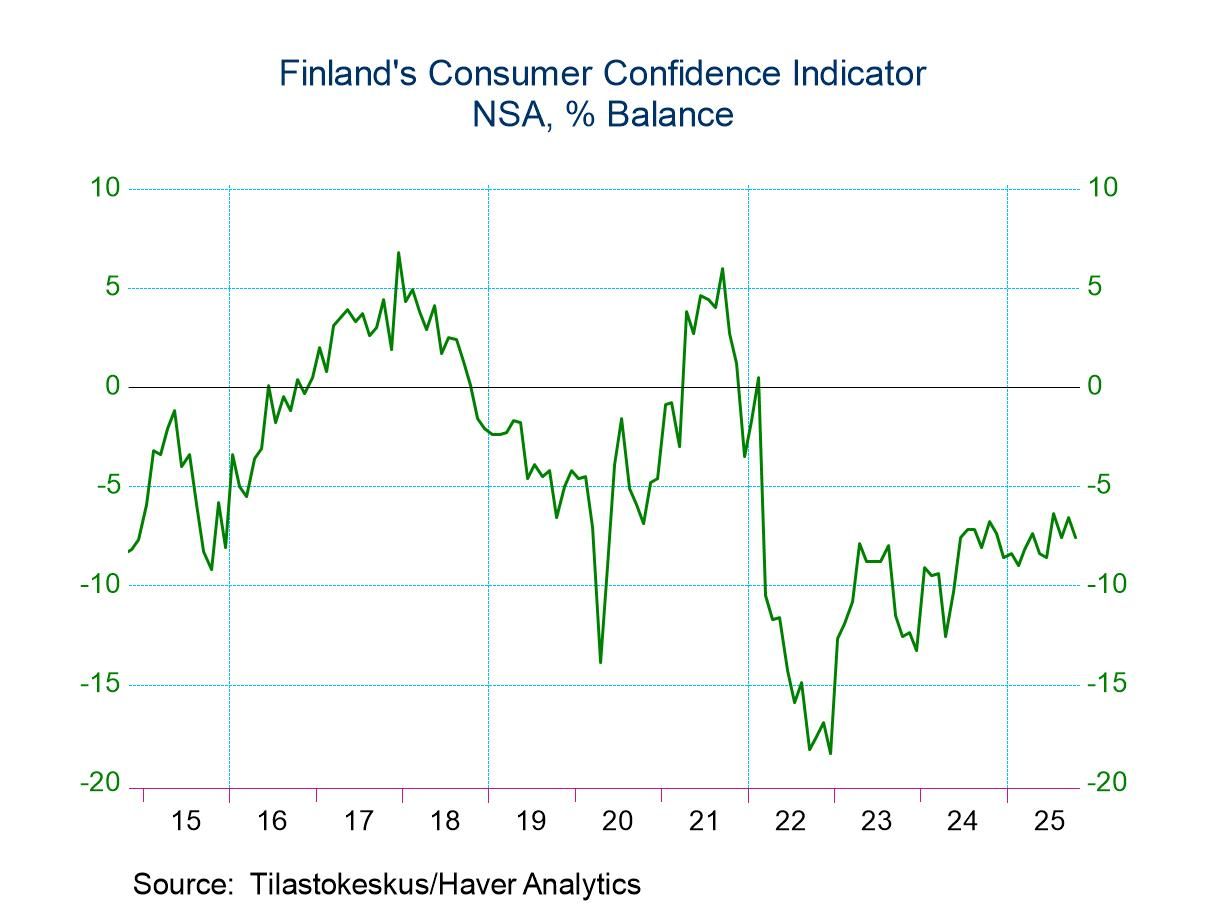 Global| Jun 18 2013
Global| Jun 18 2013U.S. CPI Ticks Higher But Food Prices Slip
by:Tom Moeller
|in:Economy in Brief
Summary
The cost of living remains under control. The consumer price index edged up a minimal 0.1% in May (1.4% y/y), the first positive change in three months. Expectations were for a 0.2% increase. Prices excluding food and energy gained [...]
The cost of living remains under control. The consumer price index edged up a minimal 0.1% in May (1.4% y/y), the first positive change in three months. Expectations were for a 0.2% increase. Prices excluding food and energy gained 0.2% (1.7% y/y), also the firmest increase in three months and it matched expectations.
Holding back last month's CPI gain was a 0.1% slip (+1.4% y/y) in food prices. It was the first monthly decline since 2009 and reflected widespread price weakness. Dairy product prices fell 0.8% (+0.1% y/y), cereal & bakery product prices declined 0.4% (+0.9% y/y) while meat prices were unchanged (+0.6% y/y). These weak readings were offset by a 3.6% jump (6.3% y/y) in egg prices and a 0.4% gain (2.2% y/y) in fruit & vegetable costs.
A 0.4% rise (-0.8% y/y) in energy prices was the first increase in three months. It was led by a 2.4% gain (14.2% y/y) in natural gas costs and a 0.8% rise (1.7% y/y) in electricity prices. Gasoline costs were unchanged (-4.1% y/y) but fuel oil prices fell 2.9% (-5.8% y/y).
Prices for goods less food and energy were unchanged (-0.2% y/y), as they have been for the last four months. Furniture & bedding costs slipped 0.1% (-0.8% y/y) while home appliance prices declined 0.6% (-1.8% y/y). Medical care goods prices were 0.5% lower, unchanged y/y, and new car & truck costs were stable (1.1% y/y). Recreation goods prices gained 0.2% (-1.3% y/y) and apparel costs also rose 0.2% (0.2% y/y), the first increase in four months.
Core services prices were up 0.2% (2.3% y/y). Public transportation costs recovered 1.4% (3.3% y/y) following April's decline, while recreation service prices gained 0.3% (2.0% y/y). Tuition costs rose 0.3% (3.8% y/y) and medical care services prices were unchanged (2.9% y/y). Shelter costs (32% of the CPI) rose 0.3% (2.3% y/y) while owners equivalent rent of primary residences increased 0.2% (2.1% y/y).
The consumer price data is available in Haver's USECON database while detailed figures can be found in CPIDATA. The expectations figure is from Action Economics and is found in the AS1REPNA database.
| Consumer Price Index (%) | May | Apr | Mar | May Y/Y | 2012 | 2011 | 2010 |
|---|---|---|---|---|---|---|---|
| Total | 0.1 | -0.4 | -0.2 | 1.4 | 2.1 | 3.1 | 1.6 |
| Total less Food & Energy | 0.2 | 0.1 | 0.1 | 1.7 | 2.1 | 1.7 | 1.0 |
| Goods less Food & Energy | 0.0 | 0.0 | -0.1 | -0.2 | 1.3 | 1.3 | 1.1 |
| Services less Energy | 0.2 | 0.1 | 0.2 | 2.3 | 2.4 | 1.8 | 0.9 |
| Food | -0.1 | 0.2 | 0.0 | 1.4 | 2.6 | 3.7 | 0.8 |
| Energy | 0.4 | -4.3 | -2.6 | -0.8 | 0.9 | 15.2 | 9.6 |
Tom Moeller
AuthorMore in Author Profile »Prior to joining Haver Analytics in 2000, Mr. Moeller worked as the Economist at Chancellor Capital Management from 1985 to 1999. There, he developed comprehensive economic forecasts and interpreted economic data for equity and fixed income portfolio managers. Also at Chancellor, Mr. Moeller worked as an equity analyst and was responsible for researching and rating companies in the economically sensitive automobile and housing industries for investment in Chancellor’s equity portfolio. Prior to joining Chancellor, Mr. Moeller was an Economist at Citibank from 1979 to 1984. He also analyzed pricing behavior in the metals industry for the Council on Wage and Price Stability in Washington, D.C. In 1999, Mr. Moeller received the award for most accurate forecast from the Forecasters' Club of New York. From 1990 to 1992 he was President of the New York Association for Business Economists. Mr. Moeller earned an M.B.A. in Finance from Fordham University, where he graduated in 1987. He holds a Bachelor of Arts in Economics from George Washington University.


